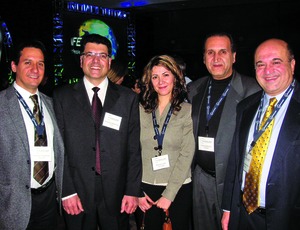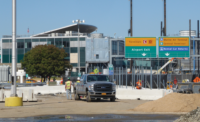The Middle Eastern men gather every year at the annual internal seminar held by their employer, Kleinfelder. They share notes about families, raising children and perhaps trade news from their homeland. For this cluster of Iranian-Americans, this kind of networking is a microcosm of a socio-cultural immigrant phenomenon: They are a generation of engineering talent that came to the U.S. to study and train but never returned to their home country.


But many have visited Iran. “When you go there, they look in your eyes, and they know you don't live there,” says Saiid Behboodi, a Kleinfelder vice president. An Iranian shop owner once told one of Behboodi's colleagues, “I can tell you are not from here because you have a sparkle in your eye.”
Behboodi and his peers—including Nick Bokaie, Khashayar Hadipour, John Moossazadeh and Houman Makarechi—are all in their fifties, and they all came to the U.S. in their late teens to get the best education possible, with plans to return to Iran and earn a good living there. They had been well prepared in their homeland.
The group recalls how much tougher math and science exams in Iranian high schools were compared to many American colleges' at the time. Eager to import engineering talent, the U.S. offered them scholarships and green cards. With limited room in Iranian universities at the time, plus the prestige of American engineering degrees beckoning, a flood of Iranian students poured into the U.S., each harboring dreams of contributing to a building boom back home.
“Civil engineering in Iran is an upper-echelon job,” says Bokaie, transportation director for program management. “Engineers there are like doctors and lawyers here.”
Plus, he adds with a smile, “I wanted to get the chicks.”
Then came the 1979 revolution, which changed Iran from a Western-influenced secular monarchy to an Islamic theocracy. Their future there was no longer clear, so they stayed and helped build U.S. infrastructure instead.
The engineers experienced mild racism in America during the 1979 hostage crisis. “Overnight, we became Persians,” recalls Bokaie. Makarachi recalls having to get fingerprinted at a visa station. A telephone operator hung up on Moossazadeh.
But they distinguished themselves along the way.
A 2008 report by polling research firm Zogby International confirmed a 2004 study by an Iranian-American student group at MIT. That 2004 study stated, “Iranian-Americans [are] among the most highly educated groups in the United States, with an average per capita income that was 50% higher than [the national average].”




Post a comment to this article
Report Abusive Comment